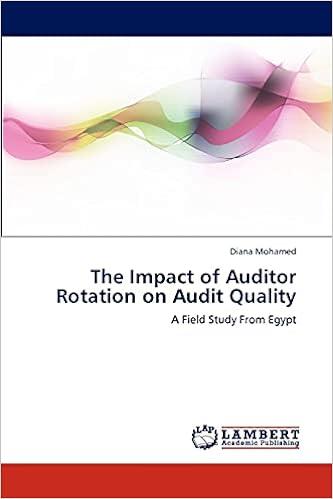Question
#1 Doogan Corporation makes a product with the following standard costs: Standard Quantity or Hours Standard Price or Rate Direct materials 7.4 grams $ 2.00
#1
Doogan Corporation makes a product with the following standard costs:
| Standard Quantity or Hours | Standard Price or Rate | ||||||||||
| Direct materials | 7.4 | grams | $ | 2.00 | per gram | ||||||
| Direct labor | 0.5 | hours | $ | 20.00 | per hour | ||||||
| Variable overhead | 0.5 | hours | $ | 7.00 | per hour | ||||||
The company produced 5,200 units in January using 39,310 grams of direct material and 2,380 direct labor-hours. During the month, the company purchased 44,400 grams of the direct material at $1.70 per gram. The actual direct labor rate was $19.30 per hour and the actual variable overhead rate was $6.80 per hour.
The company applies variable overhead on the basis of direct labor-hours. The direct materials purchases variance is computed when the materials are purchased.
The variable overhead efficiency variance for January is:
$1,540 F
$1,496 U
$1,540 U
$1,496 F
#!
Abel Corporation uses activity-based costing. The company makes two products: Product A and Product B. The annual production and sales of Product A is 200 units and of Product B is 400 units. There are three activity cost pools, with total cost and activity as follows:
| Total Activity | ||||||
| Activity Cost Pools | Total Cost | Product A | Product B | Total | ||
| Activity 1 | $ | 16,660 | 600 | 100 | 700 | |
| Activity 2 | $ | 18,450 | 1,100 | 700 | 1,800 | |
| Activity 3 | $ | 9,731 | 60 | 160 | 220 | |
The activity rate for Activity 2 is closest to:
$10.25
$16.77
$26.36
$24.91
#4
Diehl Corporation uses an activity-based costing system with three activity cost pools. The company has provided the following data concerning its costs and its activity based costing system:
| Costs: | |||||||
| Manufacturing overhead | $ | 480,000 | |||||
| Selling and administrative expenses | 100,000 | ||||||
| Total | $ | 580,000 | |||||
Distribution of resource consumption:
| Activity Cost Pools | |||||
| Order Size | Customer Support | Other | Total | ||
| Manufacturing overhead | 5% | 85% | 10% | 100% | |
| Selling and administrative expenses | 60% | 20% | 20% | 100% | |
The "Other" activity cost pool consists of the costs of idle capacity and organization-sustaining costs.
You have been asked to complete the first-stage allocation of costs to the activity cost pools.
How much cost, in total, should NOT be allocated to orders and products in the second stage of the allocation process if the activity-based costing system is used for internal decision-making?
$0
$116,000
$68,000
$58,000
Step by Step Solution
There are 3 Steps involved in it
Step: 1

Get Instant Access to Expert-Tailored Solutions
See step-by-step solutions with expert insights and AI powered tools for academic success
Step: 2

Step: 3

Ace Your Homework with AI
Get the answers you need in no time with our AI-driven, step-by-step assistance
Get Started


